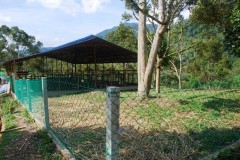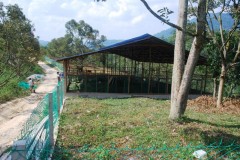May 13, 2010
Sustainable Goat Production System - A Model
Red meat is considered bad for you. But this was not the case 50 years ago. There were tribes then, and still, who consume mainly meat and live normal healthy lives. Some eskimos eat only meat throughout their lives. Nomadic people used to consume only the meat and milk of the animals they herd.
Perhaps the problem lies with how we raise the animals. Here's the lipids content of a sample cut of 100 grams taken from the USDA nutrients database:
Beef - saturated fat: 9.75gms, omega 6: 2.56gms, omega 3: Nil, Cholesterol: 90 mg
Lamb - saturated fat: 11.76gms, omega 6: 2.08gms, omega 3: Nil, cholesterol: 74mg
Chicken - saturated fat 2.6gms, omega 6: 1.87gms, omega 3: 0.03gms, cholesterol: 64mg.
The chicken sample had an oddity, trans fat of 0.105gms. Wonder what are they feeding the chickens, recycled frying oil?
Compare the above with the goat meat produced from our farm:
Saturated Fats : 0.3gms, Omega 6: 140mg, Omega 3: 49.6mg, Cholesterol 51.
The non-existence of omega 3 in industrialised meats as per the samples from the USDA database is worrying for consumer health. The chicken had an omega 6 omega 3 ratio of 62:1. Our goat meat has a ratio of 3:1.
Read here why a low ratio is important for your health.
This is how we produce our goat meat. The goats are happy, the land is happy, the consumer is healthy.
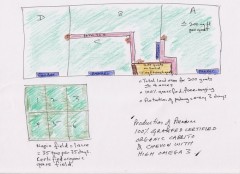
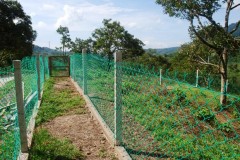
The goats are moved from field to field every 3 to 7 days. This reduces disease and intestinal worm problems.

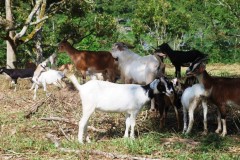
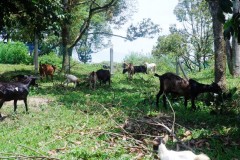
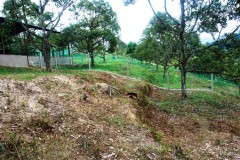
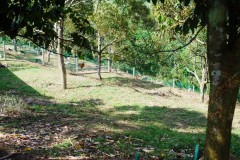
Grass is planted separately, harvested, and fed to the goats. This ensures better utilization of land and thereby reduce the demand for expanding land acreage.
An acre of land using normal grazing methods can raise a maximum 15 goats. In our case, we can raise 200 goats on an acre of land.
With less disease and better control on the quality of grass that the goats are eating, the net result is happy goats, healthier meat for the consumers and less impact on the environment.
We are the only producer of red meat that can guarantee an omega 6: omega 3 ratio of 4:1 or better (in the world!).
15:18 Posted in Goats | Permalink | Comments (1) | Tags: goat farming, sustainable goat farming, pasture management, omega 6 omega 3 ratio
Mar 20, 2010
Grassfed Cabrito
18:21 Posted in Goats | Permalink | Comments (0) | Tags: organic cabrito, chevon, grassfed goat, free-ranging goat, mutton
Jun 28, 2005
Successful Auction
Had a most successful auction of our boer crosses on Sunday, 26th June. We sold off 420 goats within 2 hours and all prices were met or exceeded. Buyers came from all over the country. We served them cabrito curry before the auction and they were really pleased with the quality of the meat and that perhaps gave them the confidence to bid.
Click here to see some photos of the auction.
18:35 Posted in Goats | Permalink | Comments (0) | Tags: Organic Farming
Jun 22, 2005
Boer Goat Auction
We are going to have an auction of about 200 breeder females on Sunday 26, June 2005 at our goat breeder farm at Serting, Kuala Pilah. We will also be selling about 200 males, commercial quality. Price for the males will be RM11 per kilo. Each male will weigh around 20 kilo.
The starting price for the females will be RM280 each to about RM600.
We are hoping to net sales of about RM100,000 from the event.
22:39 Posted in Goats | Permalink | Comments (0) | Tags: Organic Farming








